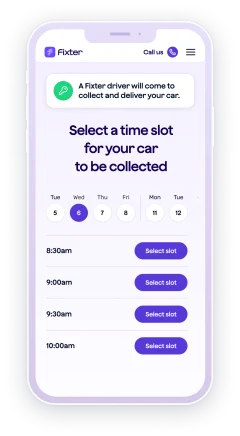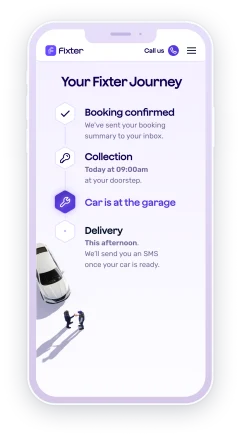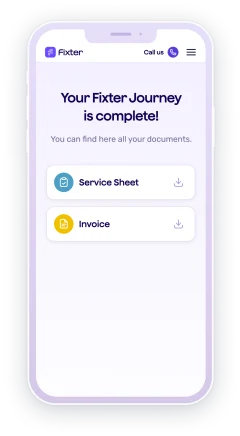Towing a trailer is a skill that requires both knowledge and practice to ensure safety on the road. Whether you're transporting your beloved caravan for a holiday or hauling equipment for work, mastering the art of trailer towing is essential for a smooth and secure journey. Understanding the intricacies of weight distribution, hitching, and manoeuvring can prevent mishaps and enhance your towing confidence. In this guide, we will delve into the key aspects of trailer towing, from selecting the right tow vehicle to navigating the highways with ease, ensuring that your travels are as safe and efficient as possible. Join us as we explore the essential tips and techniques guide to towing that every responsible trailer tower should know.
Understanding Trailer Towing Basics
Key Components of Trailer Towing
Towing a trailer involves several critical components that work in harmony to ensure a safe journey. The tow vehicle must be capable of handling the trailer’s weight, both in terms of towing capacity and braking power. The hitch is another essential element, connecting the vehicle to the trailer securely. It’s important to choose the right hitch type, such as a ball or a fifth-wheel, based on your specific towing needs. Furthermore, safety chains are crucial, acting as a backup should the hitch fail. They should be crossed under the trailer tongue to prevent it from hitting the ground if it disconnects. Additionally, the electrical system, including brake lights and indicators, must be fully operational to communicate your intentions to other road users. Ensuring all these components are in place and functioning properly is fundamental to mastering trailer towing safely.
Types of Trailers and Their Uses
There is a wide variety of trailers available, each designed for specific purposes. Caravans are popular for leisure travel, offering living accommodations on the road. They are ideal for family holidays or extended trips. Flatbed trailers, on the other hand, are versatile and commonly used for transporting large items such as vehicles, machinery, or construction materials. Enclosed trailers provide additional protection for goods, shielding them from weather conditions and theft, making them suitable for transporting valuable or sensitive cargo. Boat trailers are specifically constructed to transport watercraft safely to and from the water. Horse trailers are designed to carry livestock, ensuring the animals’ safety and comfort during transit. Each trailer type demands different towing requirements, so understanding the uses and characteristics of each is crucial for selecting the appropriate trailer for your needs. This ensures that you tow your car efficiently and safely, regardless of the load.
Assessing Your Vehicle’s Towing Capacity
Before embarking on any towing journey, it’s essential to understand your vehicle’s towing capacity. This capacity indicates the maximum weight your vehicle can safely tow and is typically outlined in the owner's manual. Exceeding this limit can lead to dangerous driving conditions, including loss of control and increased wear on your vehicle. Towing capacity is determined by several factors, including engine power, transmission, brakes, and the vehicle’s structural integrity. Gross Vehicle Weight Rating (GVWR) and Gross Trailer Weight (GTW) are critical terms to understand. GVWR refers car's towing capacity is the maximum weight your vehicle can handle, including passengers and cargo, while GTW is the total weight of the trailer and its contents. To ensure safety, the GTW should never exceed your vehicle’s towing capacity. It’s advisable to conduct a thorough check by consulting the vehicle’s specifications and, if necessary, seeking professional advice to confirm your vehicle’s capabilities.

Preparing Your Vehicle and Trailer
Essential Pre-Towing Checks
Before setting off with a trailer in tow, conducting essential pre-towing checks is vital for ensuring a safe journey. Start by inspecting the hitch for any signs of wear or damage, ensuring it is properly secured and locked. Verify the connection of safety chains, crossing them underneath the hitch to catch the trailer tongue if it detaches. Check that all lights, including brake lights, indicators, and tail lights, are functioning correctly, as clear signalling is crucial for road safety. Inspect the tyres on both the vehicle and the trailer for appropriate pressure and tread depth to avoid blowouts or loss of control. Additionally, ensure that the trailer’s load is evenly distributed and securely fastened to prevent shifting during transit. Confirm that mirrors are adjusted for optimal visibility around the trailer. Taking the time to perform these basic safety checks also helps minimise risks and contributes to a smooth towing experience.
Attaching the Trailer Correctly
Attaching the trailer correctly is a crucial step in preparing for a towing journey. Begin by aligning the tow vehicle and trailer on level ground to ensure a straight connection. Position the trailer coupler directly over the hitch ball and lower it using the jockey wheel until it fully sits on the ball. Secure the coupler by closing the latch and inserting a safety pin or lock to prevent it from coming loose. Attach the safety chains, crossing them underneath the coupler; this forms a cradle to catch the trailer tongue if needed. Connect the electrical plug from the trailer to the vehicle’s socket, ensuring all lights function correctly. Finally, raise tow ball using the jockey wheel and lock it in place to avoid contact with the ground while towing. Ensuring each step is completed with care prevents potential disconnection and maximises safety on the road.
Ensuring Proper Weight Distribution
Achieving proper weight distribution is essential for safe and stable towing. Uneven weight can cause swaying, reduced braking effectiveness, and increased strain on the tow vehicle. Begin by loading the trailer with approximately 60% of the total weight towards the front, near the hitch. This helps maintain a downward force on the hitch ball, enhancing stability. Distribute the remaining weight evenly across the trailer, ensuring that heavier items are secured low to prevent top-heaviness and potential tipping. Avoid placing too much weight at the rear of the trailer, as this can lead to fishtailing and loss of control. Check that the combined weight does not exceed the vehicle’s towing capacity or the trailer’s load limit. Using a weight distribution hitch can further enhance balance by spreading the weight limits the load more evenly across the vehicle and trailer axles. By carefully managing weight distribution, you promote safer handling and a more comfortable towing experience.
On the Road: Safe Towing Practices
Navigating Turns and Corners
When towing a trailer, navigating turns and corners requires extra care and attention. Due to the increased length of your vehicle and trailer combination, you need to take wider turns than usual. Start by slowing down well before entering the turn, allowing ample time to adjust your steering. As you approach the corner, swing out slightly wider than you would without a trailer to prevent the one how to safely tow a trailer with your car from clipping the kerb or other obstacles. Use your mirrors frequently to monitor the trailer’s position and ensure it stays within your lane. When turning, maintain a steady speed and avoid sudden movements that could destabilise the trailer. For tight corners, it might be necessary to adjust your approach angle to avoid jackknifing. Practising these techniques will improve your confidence and ability to handle turns safely while towing. Observing these practices helps keep both your vehicle and others on the road secure.
Managing Speed and Braking
Managing speed and braking effectively is crucial when towing a trailer. The added weight increases stopping distances significantly, requiring you to adjust your driving habits. Begin by maintaining a steady, moderate speed, which improves control and reduces wear on your vehicle. Always adhere to speed limits, particularly those specific to vehicles with trailers, and adjust your speed according to road conditions. When it comes to braking, anticipate stops well in advance. Gradual braking is preferable; this helps prevent the trailer from pushing against the tow vehicle, which can lead to loss of control. If your trailer is equipped with brakes, ensure they are properly adjusted and operational to aid in reducing stopping distances. Avoid sudden braking manoeuvres, as they can cause the trailer to sway or jackknife. By focusing on smooth and controlled speed and braking, you enhance safety for tow trailers, yourself and all road users.
Handling Adverse Weather Conditions
Towing a trailer in adverse weather conditions demands extra caution and preparedness. In rainy conditions, the road surface becomes slippery, increasing stopping distances and the risk of skidding. Reduce your speed to maintain control and increase the gap between your vehicle and the one ahead. Use your headlights to improve visibility and ensure your trailer's lights are working correctly to alert other drivers of your presence. In windy conditions, be wary of crosswinds that can cause the trailer to sway. Maintain a firm grip on the steering wheel and be prepared to make gentle corrections. If possible, avoid overtaking large vehicles that create additional wind turbulence. In foggy conditions, use fog lights and drive cautiously, maintaining a speed that allows you to stop within the distance you can see clearly. Always be prepared to pull over and wait for weather conditions to improve if the situation becomes too hazardous.
Troubleshooting Common Towing Issues
Recognising and Preventing Trailer Sway
Trailer sway is a common issue that can lead to dangerous situations if not managed properly. It occurs when the trailer begins to oscillate side to side, often due to improper loading, high speeds, or strong winds. Recognising early signs of sway is crucial; this includes feeling the trailer pulling against the vehicle or noticing it moving independently in your mirrors. To prevent sway, ensure your trailer is loaded correctly, with about 60% of the weight towards the front. Avoid sudden steering movements and maintain a moderate, consistent speed. If sway starts, gently reduce speed by easing off the accelerator—do not brake, as this can exacerbate the sway. Installing a sway control device or weight distribution hitch towing mirrors can also help stabilise the trailer. Regularly checking tyre pressure and alignment contributes to preventing sway. By taking these precautions, you can maintain control and ensure a safer towing experience.
Dealing with Overheating Engines
When towing a trailer, your vehicle's engine may be more prone to overheating due to the added strain. To prevent overheating, ensure your vehicle's cooling system is in top condition before setting out. Regularly check coolant levels and inspect for leaks or worn hoses. If you notice the temperature gauge rising while towing, turn off the air conditioning to reduce engine load. Instead, switch on the heater to help draw excess heat from the engine bay. If the engine continues to overheat, pull over safely and allow it to cool down before opening the bonnet. Avoid removing the radiator cap while the engine is hot, as this can lead to dangerous steam burns. Consider reducing your speed or taking breaks during your journey to give the engine a chance to cool. Ensuring the vehicle is well-maintained and understanding how to respond to overheating can prevent breakdowns and maintain engine health.
Emergency Stops and Breakdown Protocols
In the event of an emergency stop or breakdown while towing, your priority should be safety. Begin by signalling and pulling over to a safe location, ideally a lay-by or the hard shoulder. Turn on your hazard lights to alert other drivers. If you have reflective warning triangles, place them at a safe distance behind your vehicle and trailer to provide additional warning to oncoming traffic. Remain vigilant of passing vehicles as you exit the vehicle, and move away from the road if it is safe to do so. Contact roadside assistance and inform them that you are towing a trailer, as this may affect their approach to helping you. Keep a mobile phone charged and ready for emergencies, and carry essential items like water, a torch, and a first aid kit. By following these protocols, you can ensure your safety and that of others while waiting for professional assistance.
Enhancing Your Towing Skills
Advanced Towing Techniques
Once you have mastered basic towing skills, advancing to more sophisticated techniques can greatly improve your towing proficiency and safety. One such technique is mastering reverse manoeuvring. Practice is key; use a wide-open space to practise reversing with your trailer, focusing on gentle steering inputs and using your side mirrors to guide you. Another advanced skill is understanding and utilising trailer brakes effectively, especially when descending steep hills. Engaging the trailer brakes independently can provide additional control and prevent the trailer from pushing the tow vehicle. Learn to anticipate changes in road conditions and adjust your driving style accordingly. When travelling on uneven or gravel roads, reduce speed and allow for increased stopping distances. Additionally, consider investing in a trailer stability control braking system too, which can automatically apply brakes to help counteract trailer sway. By honing these advanced techniques, you will enhance both your confidence and capability as a skilled trailer tower.
Legal Requirements and Regulations
Understanding and adhering to legal requirements and regulations is fundamental for anyone towing a trailer. These laws vary across regions, so it’s crucial to familiarise yourself with the rules specific to your area or any regions you plan to travel through. Key regulations often include limits on the maximum combined weight of the vehicle and trailer, known as the Gross Combination Weight Rating (GCWR). You may also need a specific driving licence category to legally tow heavier trailers. Additionally, trailers must be equipped with roadworthy tyres, functioning lights, and visible registration plates matching the tow vehicle or car driving licence. Safety chains and breakaway systems are typically required to prevent accidents if the trailer detaches. Overlooking legal requirements can lead to fines, points on your licence, or voiding of insurance coverage. To ensure compliance, regularly check for updates to towing laws and keep all necessary documentation easily accessible during your travels.
Continuous Learning and Improvement
Continuous learning and improvement are vital for becoming a proficient and safe trailer tower. The road environment constantly changes, presenting new challenges and scenarios. To enhance your skills, consider enrolling in advanced towing courses that offer practical, hands-on experience and professional guidance. These courses often cover complex manoeuvres, emergency handling, safety checks and efficient trailer maintenance. Stay informed about new towing technologies and equipment that can offer added safety and convenience. Engage with online forums and communities where experienced towers share tips and advice. Regularly review your own towing experiences, noting any difficulties or areas for improvement. Practising regularly, even in controlled environments, helps build muscle memory and confidence. Additionally, keep abreast of changes in towing laws and road regulations to ensure compliance. By committing to ongoing learning and skill enhancement, you not only improve your safety but also enjoy a more relaxed and efficient towing experience.









